Osteoporosis
Posted on June 27, 2018 by admin
Osteoporosis is when your bones become thin and brittle. It is caused by a lack of bone strength or bone density. Similar to a sponge, your bones contain numerous holes which makes it fragile and can lead to hip, spine, or wrist fractures. This disease is usually found in older adults after age 60 and women are more likely to have osteoporosis than men. The risk of getting osteoporosis increases as we age and a woman who has gone through menopause has a greater risk. Other risk factors include a slender body, family history, people of European and Asian background, smoking, alcoholics, not getting enough weight-bearing exercises, and a lack of calcium and vitamin D intake.
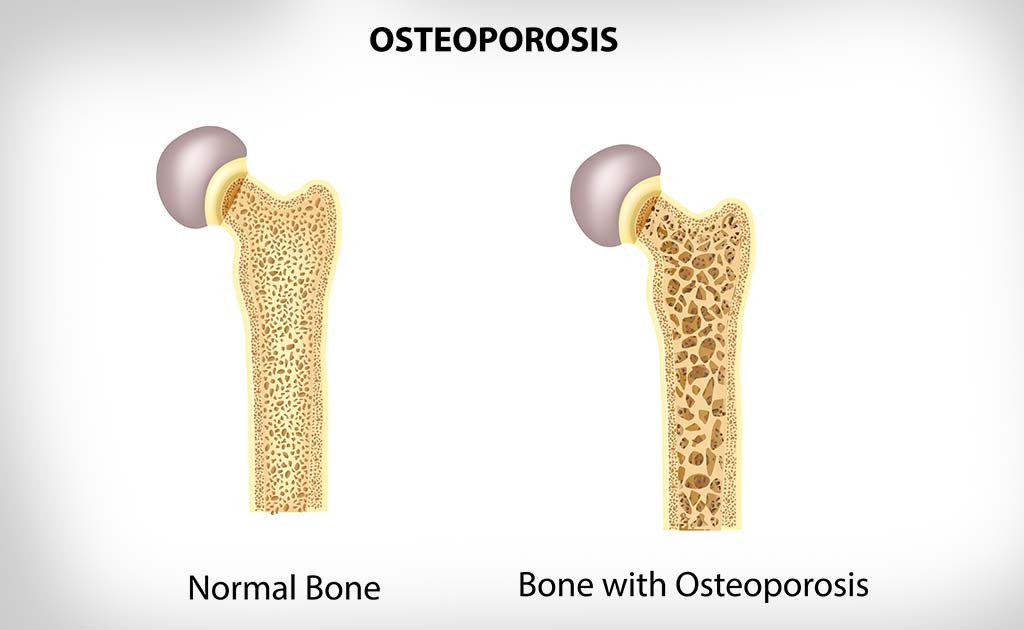
The first sign of osteoporosis is usually seen after a fall or bump where a fracture is found in their hip, spine, or wrist. They would later on experience back pain, notice their height has shrunk, and notice a curved backbone.
A bone density test can be completed to measure the thickness of your bones and the risk for a fracture. Calcium and vitamin D is essential to building strong, healthy bones. In addition, exercising and quitting smoking can help slow osteoporosis. In order to avoid bone fractures from occurring, it is important to get a bone density test and get osteoporosis treated early.
Lordosis
Posted on June 22, 2018 by admin
Lordosis is located in your neck and spine. Cervical lordosis is when there is an inward curve in the region of your neck. When there is an inward curve in your lower back, it is known as lumbar lordosis. It is more common for an individual to have lumbar lordosis than cervical lordosis. Obesity, osteoporosis, poor posture, spondylolisthesis, and kyphosis are a few causes of lordosis. Someone who does not have this condition would notice their ears are lined up over their hips, shoulders, and ankles.
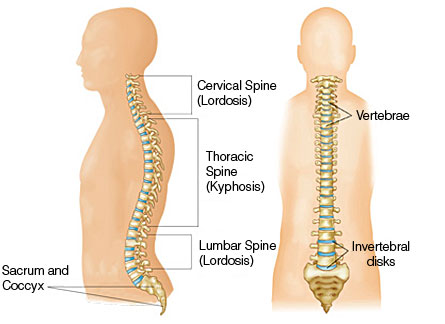
Individuals who experience lordosis would have a noticeable curve that could be seen. In addition, they might experience discomfort, severe back pain and/or tense muscles around the curve. Lordosis could restrict their movements and create a space in between their neck or lower back and the floor when they are laying down.
Physical therapy can help with strengthening, and increase your flexibility and range of motion for your neck and spine. Exercising, stretching, using extra pillows when you go to sleep to support your spine, and wearing a neck immobilizer or thoracic spine brace are all possible treatment options for lordosis.
Kyphosis
Posted on June 18, 2018 by admin
A healthy spine is made up of vertebrae that look like cylinders put on top of one another to form a column. Kyphosis is when the vertebrae in the upper back is more wedge shaped, which leads to an excessive, forward rounding of the back. It can appear in infants or teens, but it is most commonly found in older women.
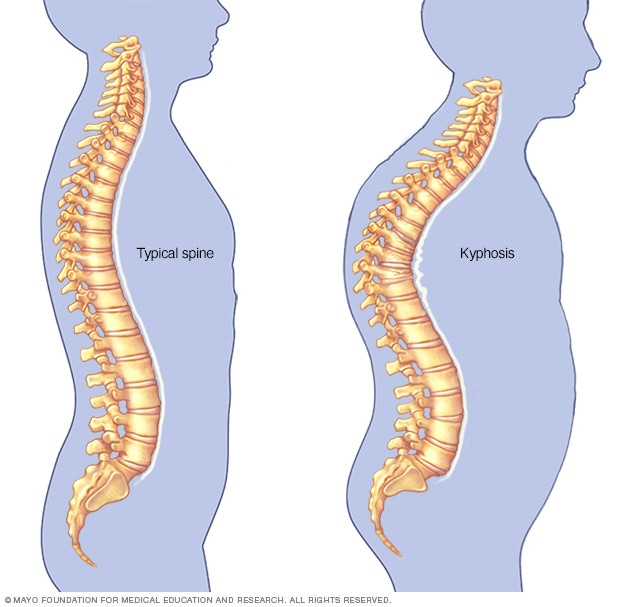
In addition to an abnormal curvature of the spine, someone who has mild kyphosis can experience back pain and stiffness. Fractures, disk degeneration, birth defects, osteoporosis can all lead to an abnormal vertebrae. Kyphosis is linked to weak back muscles and an individual can have difficulty walking, driving, and looking up. Pain can also be felt when the individual lies down and there can be problems with breathing and digestion if the situation is severe. Depending on the individual’s age and the cause, the treatment can vary for each individual.
Ankle Rehabilitation
Posted on June 6, 2018 by admin
Ankle sprains are a common injury that can lead to severe pain and weakness. We can work on various rehabilitation exercises to help our ankle heal and prevent future injuries.
After the injury has occurred, it is important to perform partial weight bearing to prevent muscle atrophy. When you are able to walk again without limping, you can work on full weight bearing. You should begin with range of motion exercises, such as plantar flexion, dorsiflexion, inversion, and eversion. You should not feel pain when you perform these ankle movements. You can then practice writing the alphabet with your toe and work on towel assisted stretches with the same ankle movements.
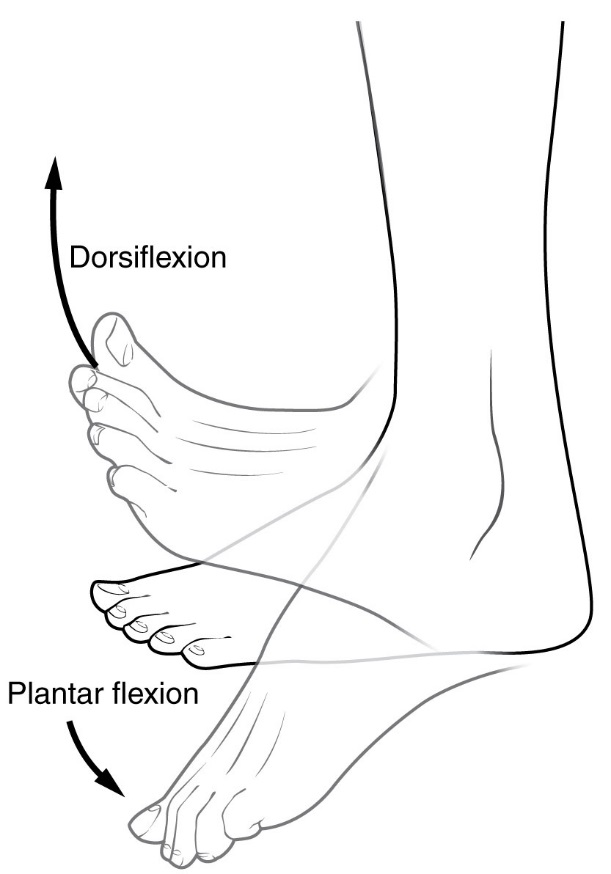
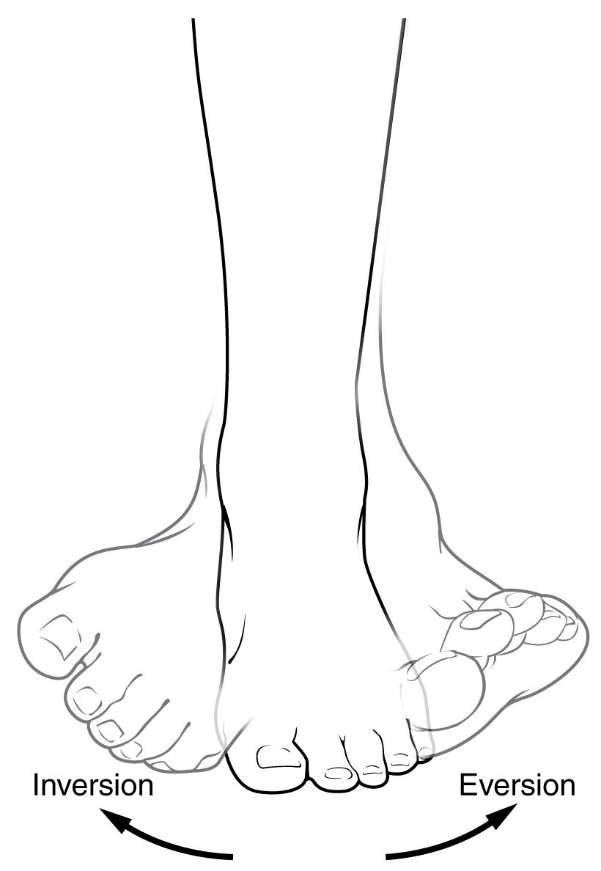
Next, you can do strengthening exercises, such as performing the ankle movements against the wall or using a rubber tubing looped around your feet for resistance. After, you can move on to balance exercises on a wobble board by doing a double leg stand with eyes opened and then closed. Then, standing on your injured foot with eyes opened and then closed.
By following these rehabilitation steps, you can help strengthen the ankle and prevent an injury from occurring again.
Achilles Tendon Rupture
Posted on May 22, 2018 by admin
The Achilles tendon connects the muscles from the calf to the heel bone. It assists us with pointing our foot towards the ground, rising on our toes, and it allows us to push off our foot when we walk. A rupture can be caused when there is a sudden increase in training intensity. Sports that involve jumping, running, and sudden starts and stops can lead to injuries to the Achilles tendon.
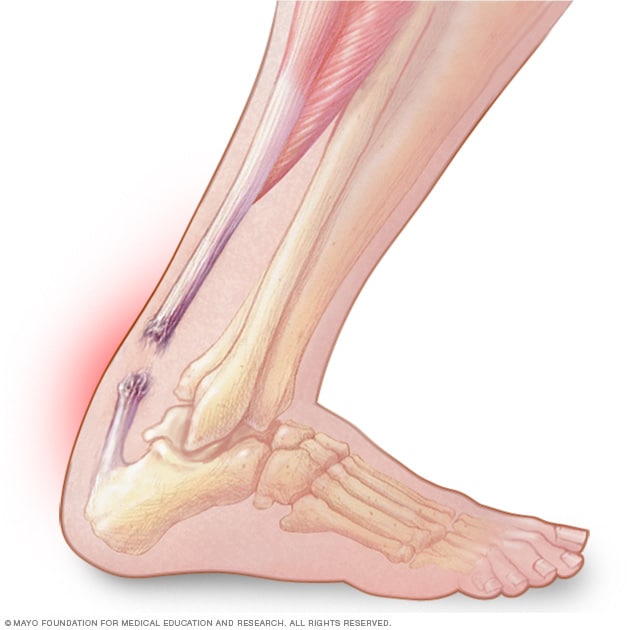
Majority of the people describe Achilles tendon rupture as a feeling of being kicked in the calf. When the injury happens, a popping or a snapping sound can be heard. Due to the pain at the back of the ankle and lower leg, the rupture can affect the injured person from walking normally. In order to prevent Achilles tendon injuries, one can increase their intensity of training slowly, perform exercises that strengthens the calf, and avoid running on hard surfaces. If a rupture occurs, surgery or nonsurgical treatments can be used to repair the Achilles tendon.
Recommended Plan of Management for Low Back Pain (LBP)
Posted on May 14, 2018 by admin
Educate on nature and course of LBP, provide reassurance, and advise on physical activity and self-management strategies. Based on patient preference and practitioner experience, we suggest:
Acute (0-3 months) Low Back Pain
- Spinal Manipulative Therapy (SMT), other commonly used treatments or a combination of SMT and commonly used treatments to decrease pain and disability in the short term.
Remark: Other commonly used treatments may include advice on posture and physical activity, and usual medical care when deemed beneficial.
Chronic ( > 3 months) Low Back Pain
- Spinal Manipulative Therapy (SMT) over minimal intervention to decrease pain and disability in the short term.
Remark: Minimal intervention includes manually applied forces with diminished magnitude or 5-minute light massage.
- Spinal Manipulative Therapy (SMT) or other treatments for short-term reduction in pain and disability.
Remark: Other treatments include extension exercises, advice plus exercise, myofascial therapy, or usual medical care when deemed beneficial. Pain relief is most effective within the first 6 months and functional improvement was most effective at 1 month.
- Multimodal therapy with or without Spinal Manipulative Therapy (SMT) to decrease pain and disability.
Remark: Multimodal therapy with SMT treatment may also include exercise, myofascial therapy, advice, educational material, usual medical care when deemed beneficial. SMT (2 sessions per week for 4 weeks) plus standard medical therapy has shown better pain and functional outcomes than standard medical care alone. Pain and functional improvement was also shown at 3 and 12 months.
Chronic ( > 3 months) Back-Related Leg Pain (Sciatica or Radicular Low Back Pain)
- Spinal Manipulative Therapy (SMT) plus home exercise and advice to reduce back pain and disability.
Remark: Reduced chronic back-related leg pain (sciatica or radicular LBP) and disability were observed at 12 weeks follow-up. Home exercise includes positioning and stabilization exercises.
Canadian Chiropractic Guideline Initiative
www.chiroguidelines.org
About PET
Posted on April 10, 2018 by admin
What is PET?
PET is the abbreviation for Polyethene Terephthalate, used to make plastic food containers, water bottles, “Sippy” bottles, baby toys, ovenware and eating utensils. The sources of exposure include plastic materials used in packaging, children toys and settled house dust.
The vulnerability of the developing brain
Children are one of the top vulnerable groups. Children are more likely to expose to PET because bottles and baby toys contain a significant amount of PET. Also, some biological determinants also lead children to be a vulnerable group. These reasons include:
- The blood-brain barrier isn’t fully formed; it is more permeable to toxins
- Rapidly growing cells are often more susceptible to toxins than slowly growing cells
- Brain growth occurs over a longer duration than other organs
- The fetus and child may lack enzymes to detoxify contaminants
- Young children often more heavily exposed to pollutants than older children and adults

Check out for the new technology for recycling PET
https://www.foodnavigator.com/Article/2018/04/06/Unilever-partners-with-Ioniqa-and-Indorama-Ventures#.Wseds05hVh8.twitter
Fee-for-service dispute
Posted on March 6, 2018 by admin
The government only pays doctors who paid fee-for-service (FFS) and who bill the government for a medically necessary physician or hospital service for that services. Therefore, patients are not involved in paying for that Fee-for-service. In general, FFS encourages doctors to move patients through quickly, which can decrease the quality of care, especially for sicker patients. For a better quality health care, some patients are willing to pay an out-of-pocket for FFS. So saying that patients decide to pay out-of-pocket for a service offered by an FFS doctor for better quality service, they choose the fully private clinics. The fully private clinics which provide private delivery and private payment (i.e., payment from patients, not government) are not allowed to bill the public plan unless they would take 100% of the payment from the government (i.e., not extra bill patients on top of the government payment) because extra billing is against the law under the universal public insurance plans in each province. However, this situation is confusing who is paying the doctor that FFS because that the public insurance covers the medically necessary physician or hospital service for the services is also ascribed to the Canada Health Act. Likewise, I believe what the most fully private clinics want is to take the government payment and bill the patients on top of that. The same thing also applies to doctors who are paid under capitation by the government, because there is no patient payment involved in capitation either. The capitation is the agreement that the government pays a set of an amount by enrolled patients assigned to them per period. The capitation does not just allow doctors to build better relationships with patients; capitation also frees doctors up to concentrate on the sicker patients because they get paid for all patients each month even if the patient doesn’t come in, it allows doctors to make money as crazy from the enrolled patients assigned to them.
By the way, I refer the doctors to GPs only…
Canadian health care providers
Posted on February 7, 2018 by admin
In Canada Health Act(CHA) design, the system is predominantly public financed and privately delivered. The Canada Health Act combined and replaced the Hospital and Diagnostic Services Act and the Medical Services Act in 1984. The event in Saskatchewan (SK) such as the famous 23 day’s strike just prior to creating public insurance for physicians (which then was followed by the federal Medical Services Act). It mainly results from that physicians didn’t want to be working with the government, so they went on strike to remain autonomous. SK government thought it would be much easier to only have public payment and allow physicians to still function as private forms of delivery. By the time the Canada Health Act replaced the other two Acts, physicians were even more powerful and even less likely to want to change their status. The government wanted physicians’ willingness to accept Fee-for-service(FFS) remuneration method. The CHA allows physicians to choose their own medical practice locations and facilitators in exchange for the FFS remuneration method. Intuitively, the Canada Health Act is the inception of the current Medicare approach. The current Medicare approach in Canada leads physicians to have a chance to create the long waiting time.
Read more about the history of the Canadian health system:
http://canadiandoctorsformedicare.ca/Who-We-Are/the-case-for-medicare.html
Drive a Tesla and save the world
Posted on January 20, 2018 by admin
Co2 gases from automobile pollution is the driving factor in climate change.
Electric car such as the Tesla Model S, X and 3 are 100% pure electric vehicle.
There is nothing more annoying when a Plug-in hybrid that is taking up an electric car charger. Oil companies will tell you electric cars are not practical and we continue to rely on their products.
Get your very own Tesla Model S or X with unlimited Supercharging and $700 credit until April 30, 2018
Free Tesla SuperCharging and $700 credit

